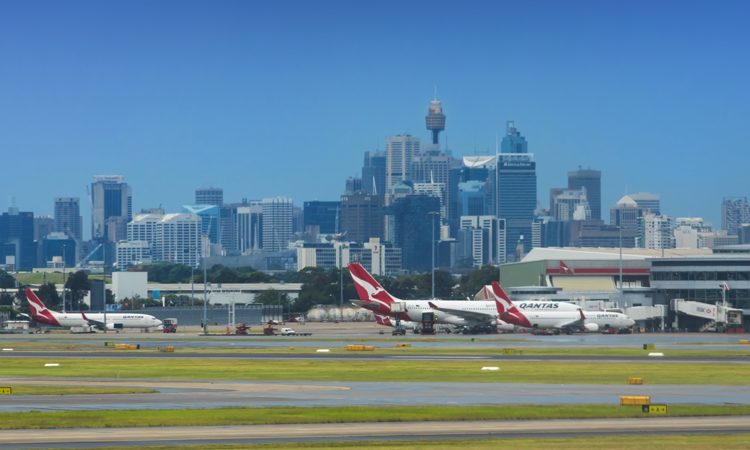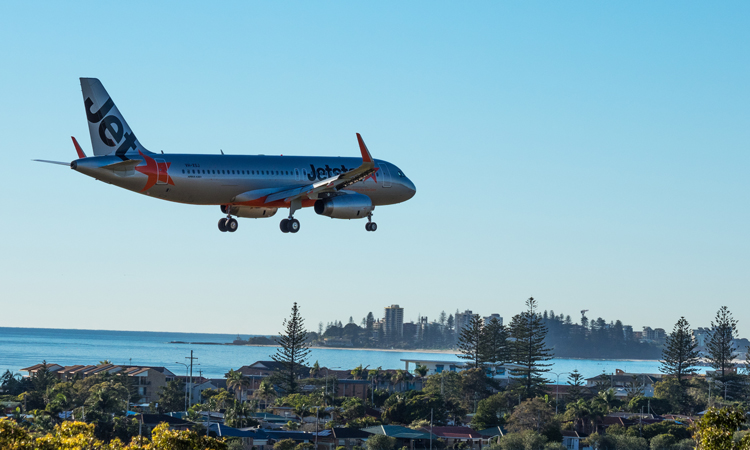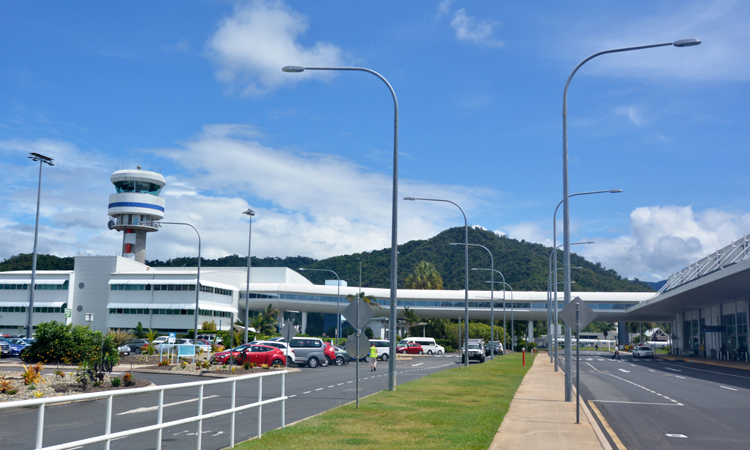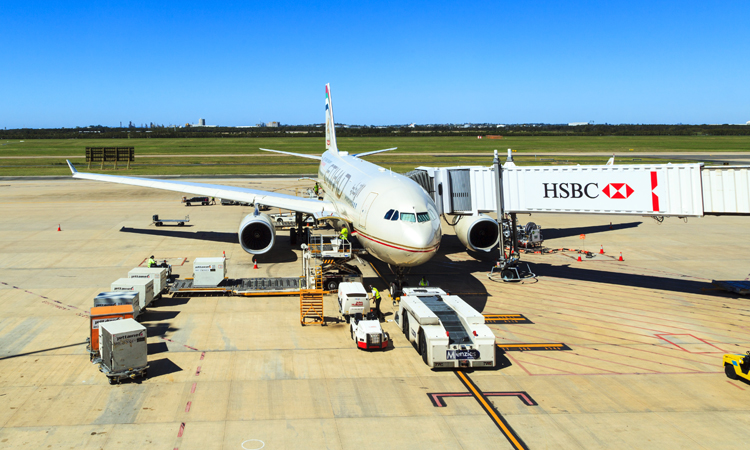Investment is imperative in driving seamless experiences
- Like
- Digg
- Del
- Tumblr
- VKontakte
- Buffer
- Love This
- Odnoklassniki
- Meneame
- Blogger
- Amazon
- Yahoo Mail
- Gmail
- AOL
- Newsvine
- HackerNews
- Evernote
- MySpace
- Mail.ru
- Viadeo
- Line
- Comments
- Yummly
- SMS
- Viber
- Telegram
- Subscribe
- Skype
- Facebook Messenger
- Kakao
- LiveJournal
- Yammer
- Edgar
- Fintel
- Mix
- Instapaper
- Copy Link
Posted: 3 May 2019 | Caroline Wilkie - Australian Airports Association | No comments yet
The rapid advancement of technology in the airport industry has been a significant theme in recent years. Airports are working to embrace opportunities and manage the challenges that come with the pace of change. In the first of a series for International Airport Review, Caroline Wilkie, CEO of the Australian Airports Association, reveals how creating a seamless experience is about far more than simply making airport processes faster and easier.


Cited by the nation’s top tourism boss as the ‘transport cathedrals’ of their home cities and towns, Australia relies on its airports perhaps more than most. With 97 per cent of international visitors arriving to the country by air, airports play a critical role in local tourism growth.
A seamless travel experience must therefore embrace the whole airport experience, from an easy journey through the airport to a clear connection to the tourism offering of the region.
With Australia experiencing significant international passenger growth in recent years, investing to increase capacity and deliver on this vision has been central to airport operations. Australian airports are achieving this in a range of ways: investing to drive the adoption of new technologies, using data to support efficient operations; and empowering passengers to personalise their own airport experience.
Private investment is driving a seamless experience
The privatisation of Australia’s major airports two decades ago unlocked new opportunities for investment to support aviation and tourism growth across the country. The nation’s major airports have invested $15 billion in airport improvements since 2002, helping realise significant benefits for both passengers and airlines. In the next decade, the same airports plan to invest a further $20.6 billion.
This significant effort to transform Australia’s airports at a time of strong passenger growth has required new approaches to manage increased demand and a more diverse passenger mix and form a meaningful part of the tourism experience.
Private investment has helped unlock that potential – following a trend witnessed globally by ACI World. It estimates that airports with private sector participation invested 14 per cent more than their public counterparts on a per-traffic unit basis from 2012-2016.
Importantly, in Australia this investment has occurred in close consultation with airlines and other airport partners to maximise efficiencies for both airport users and passengers. This focus on investing for growth has led Australian airports to tackle the traditional pain points for passengers, most notably at check-in, security and at the boarding gate.


Gold Coast Airport was the first Australian airport to introduce a common use passenger processing system
Queensland Airports Limited (QAL)’s Chief Financial Officer, Amelia Evans, said there had been a strong focus on understanding how these pain points impacted the passenger journey in recent years.
It has been paying off, with significantly-improved outcomes for travellers departing from the company’s biggest airport, Gold Coast Airport. “If we can reduce the impact of these, it will exponentially improve our passengers’ journeys,” she explained. “Our approach to data and innovation has dramatically reduced the time involved with check-in: from about 45 minutes to check in and go to security, down to a few minutes.”
These sorts of dramatic shifts have been replicated at airports nationwide.
The range of technologies adopted by Australian airports are wide and varied, and are advanced in close partnership with airlines and other on-airport partners.
The use of SmartGates in border processing is a case in point. The use of the new technology at Australian airports has made border processing a much faster process – going from minutes to just seconds at many airports. This doesn’t just provide a faster journey, but also takes the stress out of a critical airport process for seasoned travellers and first-time passengers alike.
What may be less obvious is the fact that it is also an important part of the tourism experience. Tourism Australia’s Managing Director, John O’Sullivan, told the AAA last year just how much border processing could impact the first and last impressions for international tourists.
“If you think about when you step off a flight, the very first thing you experience is obviously the immigration process. Moreover, when you depart a destination, it’s a critical part of that journey,” he said. “The quality of the experience that airports provide is really fundamental to the impression a visitor will have of a destination.”
Look no further than biometrics as a great example of enhancing that experience. Sydney Airport has partnered with Qantas for a biometrics trial that allows passengers to use their face as their passport and boarding pass throughout various key stages of the airport processes.
Facial recognition technology is expected to speed up the passenger experience across airport processes, while also supporting improved safety outcomes. The trial – tested by Qantas passengers volunteering to take part on select international flights – has addressed four key areas in the passenger journey, including automated check-in, bag drop, lounge access and boarding.


Cairns Airport is currently undergoing terminal upgrade work
It will no doubt be of interest to the wider community and help inform the roll-out of this important technology, as other airports also work in partnership with their airline partners to explore the potential for biometrics.
As digital futurist Dr Hugh Bradlow noted at the AAA’s national conference in November 2018, there are further applications for using facial recognition technology for airports to consider in the future.
Using biometrics to locate a passenger that hasn’t presented for boarding after checking in might be one of them.
Using data to yield results
Australian airports are increasingly using data behind the scenes to better respond to passenger demand. State-of-the-art operations centres are providing more visibility and greater opportunities for airports to share information with the key agencies they work with day-to-day.
At the same time, data analytics are better predicting queue wait times and congestion points to identify areas where resources can best be directed.
QAL’s airport operating system provides a single platform for real-time flight data, improving automation based on direct data feeds from airlines, air traffic control, ground handlers and airport management. This has been complemented by passenger flow technology helping the airport to more accurately predict queue length after installing new technology ahead of the 2018 Commonwealth Games on the Gold Coast.
These real-time notifications both assist with the day-to-day peaks in airport demand, while also better informing future terminal design.
Both these systems are supported by a common use passenger processing system (CUPPS). Gold Coast Airport was the first Australian airport to introduce this approach, which sees passengers from all airlines use the same check-in system to improve efficiency across the airport.
Data driven technologies continue to present significant opportunities for the future, and airports are working closely with their partners to identify smart uses of data to improve the passenger experience.
Personalising the airport experience
AAA research has found that 22 per cent of Australian airports had recently enhanced the customer experience through terminal upgrades.
Many of these changes have involved the technological innovations outlined above. A great deal of terminal upgrades have delivered more tailored retail offerings to meet passenger demand and improve the overall enjoyment of customers’ time at the airport. But Australian airports have also introduced a range of projects that help smooth passenger journeys through the airport and make their experience easier.


Brisbane Airport has deployed cryptocurrency payment options in its international terminal
For example, Brisbane Airport has forged new ground with a range of customer initiatives across a range of touch points for its passengers, including cryptocurrency payment options in its international terminal.
Providing a wider range of payment options is just a small example of how Brisbane Airport is identifying new opportunities to make the airport a more personal experience, where passengers can tailor how they interact with services and facilities to meet their needs.
These initiatives have a common thread: meeting the needs of all passengers to the airport to ensure a seamless experience for every one of them.
Of course, there remains great potential for further personalising the airport experience. For example, new terminal upgrades at Adelaide and Cairns airports currently underway will bring a taste of the local tourism offering to the terminal. Additional runways under construction or planned in Australia will provide new opportunities to meet a greater number of passenger needs.
As SITA Vice President, Catherine Mayer, told the AAA National Conference in November 2018, the key will be taking up the challenge to continue improving the customer experience.
Outside-the-box thinking that could include novel uses of holograms or robotics could have a significant impact. “It’s got to be a true quality experience, meaning you have to add value,” she told AAA National Conference delegates. “[Passengers] want to use technology from the beginning to the end and the technology is the personal interpreter, personalising all of the things they need.”
Biography
Caroline Wilkie has been CEO of the Australian Airports Association since 2011. The AAA represents all major regular passenger transport airports in Australia as well as council airports. The membership spans from councils with grass strip runways to Australia’s major gateways and represents a further 140 corporate members. The AAA is engaged in research, developing industry publications, education, advocacy and major industry events. Caroline has a Master’s degree in Public Affairs and more than 15 years’ experience in association management.
Issue
Related topics
Airside operations, Capacity, Passenger experience and seamless travel, Passenger volumes, Terminal operations
Related airports
Brisbane Airport (BNE), Cairns Airport, Gold Coast Airport, Queensland Airports Limited, Sydney Airport (SYD)
Related organisations
Related regions
Related people
Amelia Evans, Caroline Wilkie, Catherine Mayer, John O'Sullivan


















